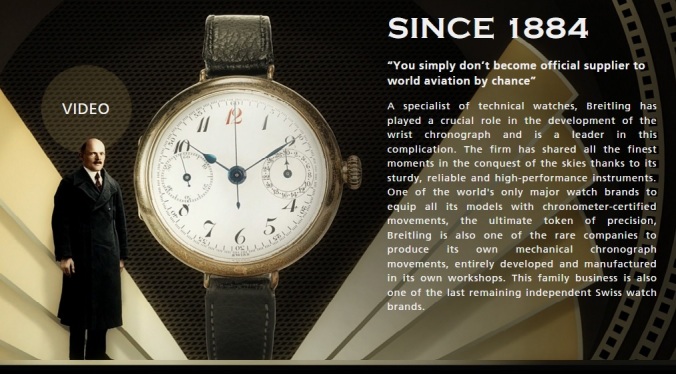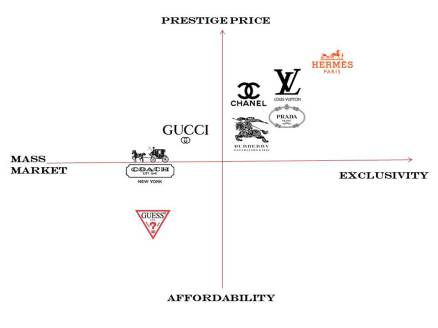T1 2016 MPK732 Marketing Management (Cluster B)
Brand positioning is a battle for the mind of the consumer. For a brand to occupy a distinct position, relative to competing brands (Rix 2013). It may be developed on an elaborate brand strategy chart and might be discussed extensively in the boardroom, but the final destination and home of brand positioning is in the consumers’ mind. There is often confusion with brand positioning and market positioning, but the two concepts are markedly different. The latter concerns the position of a company in the marketplace in terms of size and market share in its operating sectors. Brand positioning is a connection between a brand and the consumers’ mind and emotions. (Okonkwo 2007).
For luxurious brands, marketing has nothing in common with the cost effectiveness of a product. Luxury is about ‘dazzling’, so luxury itself is the unique selling point. The product needs a story, something that the customer can be drawn into; a tale of aspiration, so that you, the consumer, want to be a part of the legacy. (Brahma 2015). The story is there to justify to the customer for paying a premium for the product. Marketers create this luxury aura by positioning the product to the elements such as time, heritage, Country of origin, craftsmanship, man-made, exclusivity and limited edition. (Bastien 2015).
Take for example the story of the Breitling watch, on their website they proudly state they are ‘a leader in this complication’. They also link themselves to the ‘finest moments in the conquest of the skies’ to give the association of pioneers and pushing the boundaries of forever flying higher. For some, it evokes the imagery of fighter planes doing battle in the world wars; so emotions of bravery and valour is part of the heritage in what comes with this watch and for its wearer. This is supported by a long history and is shown in big font and in bold, first incorporated ‘Since 1884’. It emphasises its uniqueness and craftsmanship by going on to say they are one of the last remaining independent family businesses that is still developed and manufactured in its own workshops.

https://www.breitling.com/en/since1884/
Measuring Brand Position
Luxury brands need to position themselves accordingly, and a useful assessment tool is a positioning map. A company needs to understand where they currently sit in consumers’ minds and in comparison to its competitors (Rix 2013). The map is a good tool for the company to understand and measure where the company’s products are in relation to where they want them to be. A map can form the basis for a product re-positioning strategy, and as it is quite easy to use in a market research setting, it should allow for honest and clear results and market feedback. In the example below, it is clear that Gucci appeals more to the mass market than to the exclusivity end. They could be happy with this position as they seemed to have carved out a unique position in the market for themselves, or they could try to re-position to be more exclusive end but then come under direct competition with the more prestigious brands such as Chanel and Prada.

source : https://louisvuittonbrand.files.wordpress.com/2013/01/positioning-map.jpg
Luxurious brands require drawing the consumer into an exclusive world of heritage, proudness and uniqueness to justify paying a premium product price. Luxury brands need to enforce and maintain their unique selling points to get the message across, maintain and attract consumers. Companies can use position maps as a tool to assess and measure their brand performance in relation to the market and how they are perceived.
Blog by Wadavi (David Wan)
WordPress username: Wadavi
References
Bastien, V (2015), Marketing to the High End Consumer, Available at: https://www.entrepreneur.com/article/250745 Accessed on 3 April 2016
Brahma, M (2015) A guide to Luxury Brand Marketing, Available at: http://retail.economictimes.indiatimes.com/re-tales/a-guide-to-strategic-luxury-brand-marketing/581 Accessed on 5 April 2016
Brahma, M (2015) Strategic Positioning of Luxury Brands, Available at: http://retail.economictimes.indiatimes.com/re-tales/strategic-positioning-of-luxury-brands/862 Accessed on 5 April 2016
Okonkwo, K (2007) Luxury Fashion Branding, Palgrave Macmillan, New York
Rix, P (2013) Marketing – A Practical Approach, 7th Edition, McGraw-Hill, Australia Pty Ltd.
Share this:
Like this:
Like
Loading…






